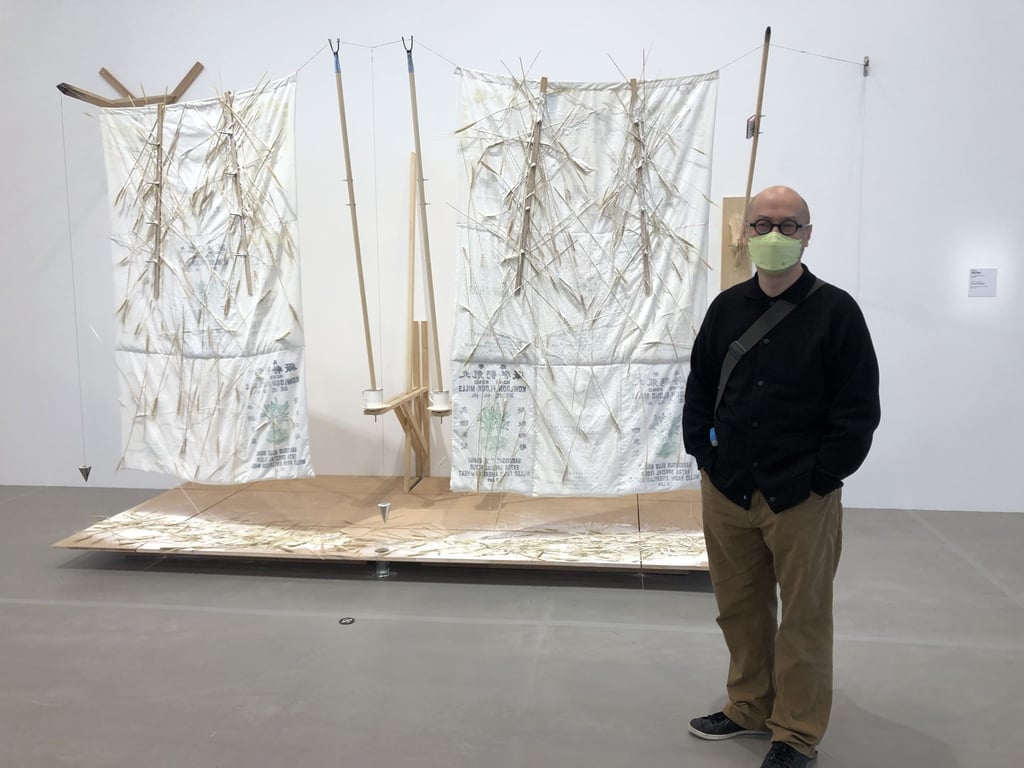Painter Kurt Chan reimagines the birth of Chinese characters in a Hong Kong exhibition
- Retired Chinese University of Hong Kong art teacher deconstructs characters by applying Western abstract design principles to bring out new ideas of structure
- An artist used to working in mixed media, Chan has used acrylic paint as his medium to make the artworks in the ‘Sky Rains Grain’ show environmentally friendly

With a name derived from an old tale, “Sky Rains Grain” is a series of paintings by Kurt Chan Yuk-keung that reimagines the birth of Chinese words and offers a fresh take on the timeless East-meets-West dynamic.
For Chan, using a Western style of geometric, rational design to deconstruct Chinese characters – a visual wordplay in a way – can bring out new ideas about structure and meaning.
Notably, the exhibition forgoes wall labels: Chan says while the titles of some paintings give away the Chinese characters they are based on, he wants viewers to come up with their own interpretation and not become obsessed with guessing the words in the pictures.

Chan was inspired by the calligraphy of ancient stone inscriptions predating China’s Tang dynasty (618-907), and decided to marry the style with Western abstraction through imaginative use of colour combinations, layering and repetition. And he chose to paint in acrylic, which provides more fluidity than oil.
In some of the works, Chan explores the duality between word components and meanings. For example, Connection plays with the fact that the Chinese words for “broken” and “continuous” are made up of similar elements even if their meanings are opposite.
